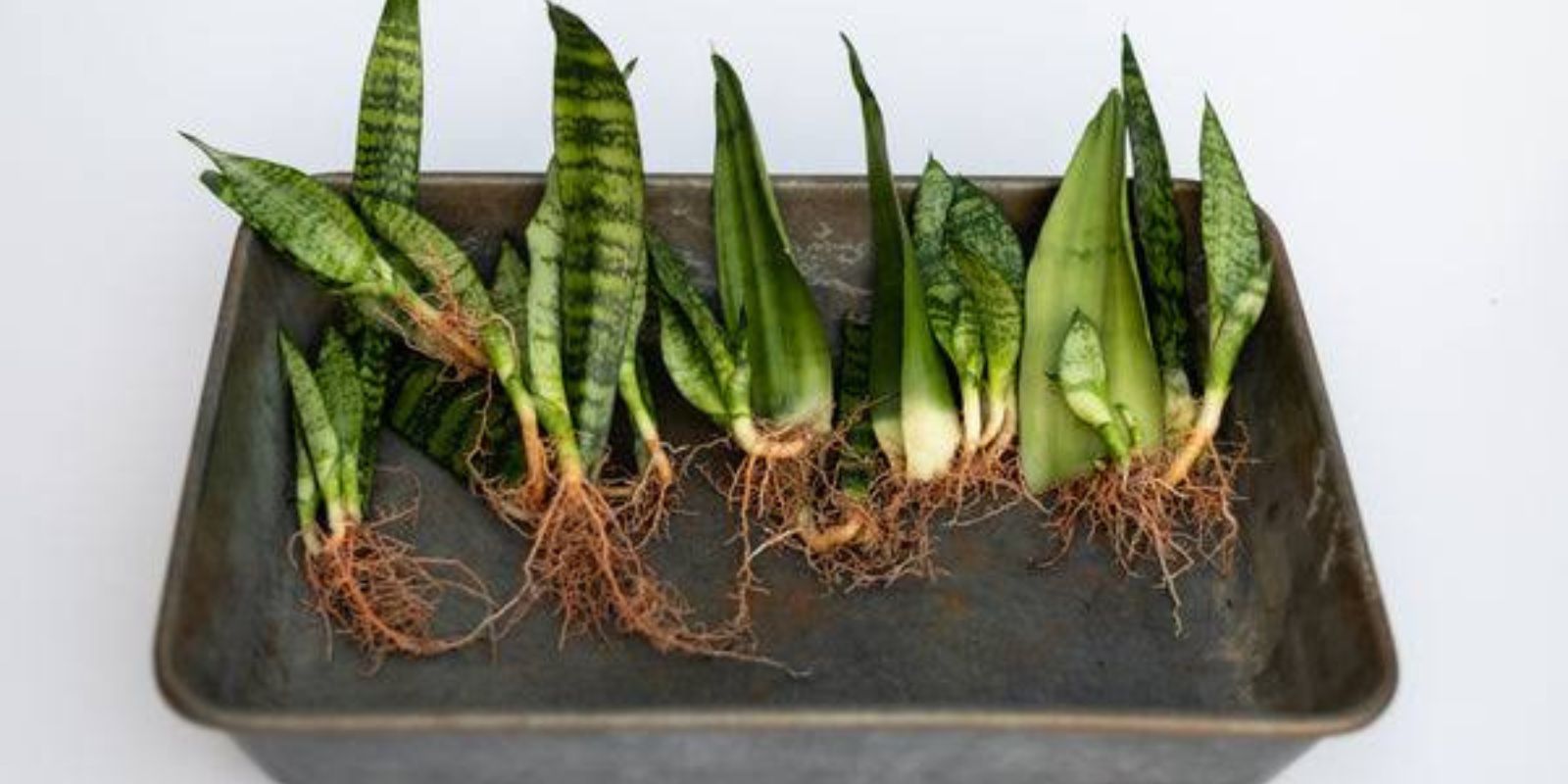Introduction
Sansevieria, commonly known as the snake plant or mother-in-law’s tongue, is a beloved houseplant known for its resilience, air-purifying qualities, and striking architectural form. While it’s a favorite among plant enthusiasts, few know just how easy it is to propagate this plant and grow their collection. Whether you want to gift it to friends or create a lush indoor jungle, propagating Sansevieria is a rewarding and straightforward process.
In this article, we’ll dive into two effective propagation methods—water propagation and soil propagation—detailing each step to help you succeed.
Why Propagate Sansevieria?
- Low Maintenance Growth: Snake plants are hardy and thrive with minimal care, making them ideal for propagation projects.
- Cost-Effective: Instead of purchasing new plants, propagation allows you to expand your collection for free.
- Perfect Gifts: These propagated plants make thoughtful, sustainable gifts for friends and family.
Two Quick and Easy Propagation Methods
1. Water Propagation
Water propagation is a visual and satisfying method to see the rooting process in action. Here’s how to do it:
Step-by-Step Instructions:
- Select a Healthy Leaf:
- Choose a mature, green leaf from your Sansevieria plant. Avoid damaged or yellowing leaves, as these may not root well.
- Cut the Leaf:
- Use clean, sharp scissors or pruning shears to cut the leaf at its base. Then, slice the leaf into 2–3 inch sections.
- Ensure you remember the “bottom” of each section, as planting or submerging the wrong end will fail to produce roots.
- Place in Water:
- Fill a clean glass or jar with water. Submerge the bottom end of the leaf section in water, leaving the top exposed.
- Place the jar in a spot with bright, indirect sunlight.
- Monitor and Maintain:
- Change the water every 5–7 days to prevent bacterial growth.
- After 3–5 weeks, roots will begin to form at the bottom of the cuttings. Once the roots are 1–2 inches long, the cuttings are ready for planting.
- Transfer to Soil (Optional):
- You can continue growing the cuttings in water or transfer them to soil for long-term growth. Use a pot with drainage holes and a well-draining soil mix.
Advantages of Water Propagation:
- Easy to monitor root growth.
- Great for beginners to learn the basics of propagation.
2. Soil Propagation
Soil propagation is ideal if you prefer a hands-off approach and want to root directly in the plant’s future home.
Step-by-Step Instructions:
- Choose a Leaf and Cut It:
- Just like in water propagation, select a healthy leaf and cut it into sections. Let the cuttings dry for 1–2 days to allow the ends to callus. This prevents rot when planted in soil.
- Prepare the Soil:
- Use a cactus or succulent potting mix for optimal drainage. Alternatively, mix regular potting soil with sand or perlite to achieve the same effect.
- Fill a pot with the soil mix and ensure it has drainage holes.
- Plant the Cuttings:
- Insert the dried, callused end of each leaf cutting about 1–2 inches into the soil. Firm the soil around the base to keep the cutting upright.
- Water Sparingly:
- Water the soil lightly immediately after planting. Allow the topsoil to dry out between waterings to prevent overwatering, which can lead to root rot.
- Place in Indirect Light:
- Position the pot in a warm spot with bright, indirect sunlight. Avoid direct sunlight, which can scorch the cuttings.
- Wait for Growth:
- Be patient! It may take several weeks to months for new roots and leaves to appear. Once you notice fresh growth, it’s a sign your propagation was successful.
Advantages of Soil Propagation:
- No need to transfer the cuttings later.
- Mimics the plant’s natural rooting process.
Tips for Successful Sansevieria Propagation
- Use Clean Tools: Sterilize scissors or shears before cutting to prevent the spread of disease.
- Monitor for Pests: Watch for signs of pests like mealybugs or spider mites, especially on new growth.
- Choose the Right Environment: Sansevieria thrives in temperatures between 60–80°F. Avoid exposing your cuttings to drafts or extreme heat.
- Be Patient: Propagation takes time. Some cuttings may root quickly, while others might need extra weeks to establish themselves.
Why Sansevieria Propagation Is Worth It
Propagating your snake plant is more than just a gardening project—it’s an opportunity to connect with nature, exercise patience, and cultivate sustainability. Each cutting you nurture into a full-grown plant represents a success in your gardening journey.
Moreover, propagated Sansevieria can serve as beautiful décor in your home, gifts for loved ones, or even additional plants for air purification.
Common Mistakes to Avoid
- Overwatering: Excess water can cause root rot and kill your cuttings. Keep the soil lightly moist, not soggy.
- Planting Upside Down: Always ensure you plant the bottom of the leaf cutting in the soil or water. Mark the bottom end if needed to avoid confusion.
- Skipping Callusing: Skipping the drying period can lead to rotting cuttings in soil propagation.
FAQs About Sansevieria Propagation
Q: How long does it take for Sansevieria to root?
A: Roots typically appear in 3–5 weeks, but new leaves may take 2–3 months to grow.
Q: Can I propagate Sansevieria in winter?
A: While it’s possible, propagation is more successful during the growing season (spring and summer).
Q: What’s the easiest propagation method?
A: Water propagation is often considered the easiest, as you can visually monitor the root development.
Conclusion
Sansevieria propagation is a simple and rewarding way to grow your collection of these beloved houseplants. Whether you prefer the clarity of water propagation or the directness of soil propagation, both methods are easy to master and yield fantastic results.
Why not give it a try today? Share your experience or ask questions in the comments below—we’d love to hear from you!

